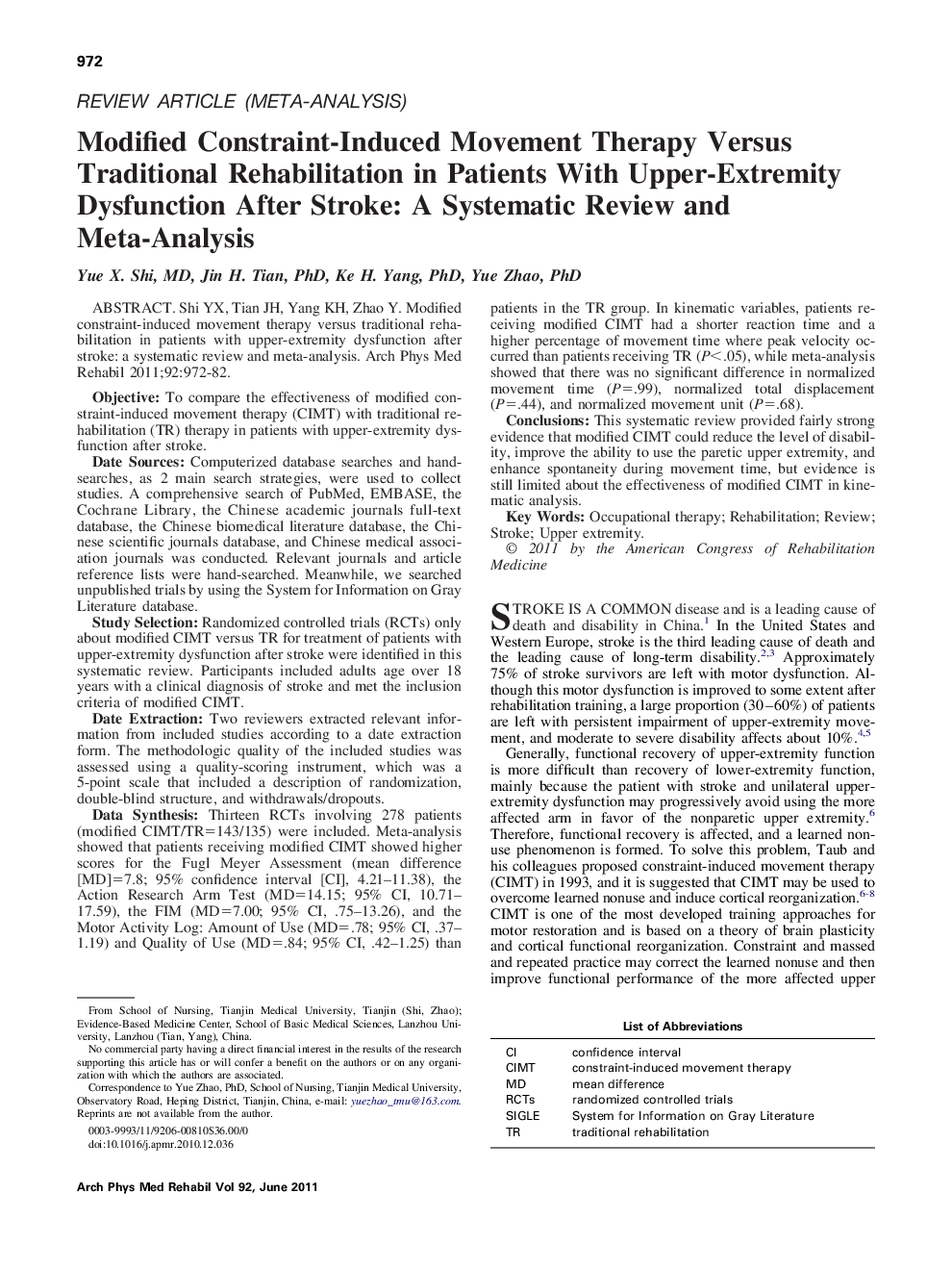| کد مقاله | کد نشریه | سال انتشار | مقاله انگلیسی | نسخه تمام متن |
|---|---|---|---|---|
| 3449168 | 1595739 | 2011 | 11 صفحه PDF | دانلود رایگان |

Shi YX, Tian JH, Yang KH, Zhao Y. Modified constraint-induced movement therapy versus traditional rehabilitation in patients with upper-extremity dysfunction after stroke: a systematic review and meta-analysis.ObjectiveTo compare the effectiveness of modified constraint-induced movement therapy (CIMT) with traditional rehabilitation (TR) therapy in patients with upper-extremity dysfunction after stroke.Date SourcesComputerized database searches and hand-searches, as 2 main search strategies, were used to collect studies. A comprehensive search of PubMed, EMBASE, the Cochrane Library, the Chinese academic journals full-text database, the Chinese biomedical literature database, the Chinese scientific journals database, and Chinese medical association journals was conducted. Relevant journals and article reference lists were hand-searched. Meanwhile, we searched unpublished trials by using the System for Information on Gray Literature database.Study SelectionRandomized controlled trials (RCTs) only about modified CIMT versus TR for treatment of patients with upper-extremity dysfunction after stroke were identified in this systematic review. Participants included adults age over 18 years with a clinical diagnosis of stroke and met the inclusion criteria of modified CIMT.Date ExtractionTwo reviewers extracted relevant information from included studies according to a date extraction form. The methodologic quality of the included studies was assessed using a quality-scoring instrument, which was a 5-point scale that included a description of randomization, double-blind structure, and withdrawals/dropouts.Data SynthesisThirteen RCTs involving 278 patients (modified CIMT/TR=143/135) were included. Meta-analysis showed that patients receiving modified CIMT showed higher scores for the Fugl Meyer Assessment (mean difference [MD]=7.8; 95% confidence interval [CI], 4.21–11.38), the Action Research Arm Test (MD=14.15; 95% CI, 10.71–17.59), the FIM (MD=7.00; 95% CI, .75–13.26), and the Motor Activity Log: Amount of Use (MD=.78; 95% CI, .37–1.19) and Quality of Use (MD=.84; 95% CI, .42–1.25) than patients in the TR group. In kinematic variables, patients receiving modified CIMT had a shorter reaction time and a higher percentage of movement time where peak velocity occurred than patients receiving TR (P<.05), while meta-analysis showed that there was no significant difference in normalized movement time (P=.99), normalized total displacement (P=.44), and normalized movement unit (P=.68).ConclusionsThis systematic review provided fairly strong evidence that modified CIMT could reduce the level of disability, improve the ability to use the paretic upper extremity, and enhance spontaneity during movement time, but evidence is still limited about the effectiveness of modified CIMT in kinematic analysis.
Journal: Archives of Physical Medicine and Rehabilitation - Volume 92, Issue 6, June 2011, Pages 972–982